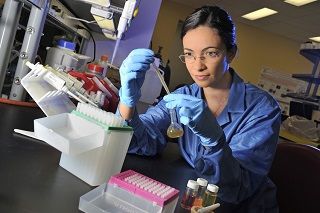From Guest Blogger Auvisa.org: Mallow-Biofuel–Diesel from a Tough Wildflower

But biofuels aren’t a magic bullet; under the wrong conditions of production and distribution they can even be more environmentally harmful than helpful. Corn ethanol, while a major component of U.S. renewable energy policy, requires yearly replanting of a monoculture crop that uses high levels of fertilizers and pesticides. Biodiesel fares better, but source crop and location makes all the difference: a strong, direct correlation has been shown between the price of soybeans and the rate of rainforest destruction in the largest state in Brazil [http://www.pnas.org/content/103/39/14637], and up to 44 million acres in Indonesia have been cleared for palm oil developments [http://www.nytimes.com/2008/01/15/business/worldbusiness/15biofuel.html?_r=0]. Biodiesel can be truly green when it’s produced and distributed locally and grown efficiently without extensive use of pesticides and fertilizers. An even better option would be a crop that also can improve marginal land and produce useful products in addition to fuel.
That’s where the seashore mallow comes in. A perennial wildflower that thrives in brackish coastal regions, Kosteletzkya pentacarpos (formerly known as Kosteletzkya virginica), is native to the eastern United States from Louisiana to New Jersey. Its flowers resemble miniature pink Hibiscus blossoms. The flowers are followed by five-angled bristled seedpods whose contents look like (and are reported to taste like) small soybeans.
Much of the research into seashore mallow as a biofuel crop originated with the work of Dr. John Gallagher. In 2006 his team at the University of Delaware issued a patent for the use of mallow as a source of biofuel [http://www.google.com/patents/WO2006110701A2?cl=en].
Seashore mallow seeds contain as much oil as soybeans, about 5-20%. This oil can be extracted through transesterification, a popular method for making biodiesel. The resulting diesel has a cetane number of 56 – as high as premium diesel, and at the highest level at which a higher cetane number indicates an increased quality of fuel. Its ash and sulfur content are low, so it burns cleanly [http://www.sciencedirect.com/science/article/pii/S0925857408000189]. No special equipment is needed; standard combines and thrashers work well without noticeable waste from shattered seed pods.
Seashore mallow’s advantage over soy is its love of salt. At home in brackish water, mallow crops could be irrigated with a seawater blend that would shrivel most agricultural weeds. It can also thrive in marginal soil too salty for soybeans and most other crops. Salty soils can occur naturally, as when water recedes from mud flats, or high spring tides flood coastal vegetation. Agriculture can also cause saline soils, as when dry lands are repeatedly irrigated without enough rainfall to purify the soil. Mallow’s roots aerate the soil and allowing rainwater to leach out the extra salt and return the land to agricultural fertility. Mallow also doesn’t need to be planted in monoculture, as do corn and soybeans. It could be grown with an early-yield forage grass, which could then be harvested for animal feed or cellulosic ethanol, or left in the field as fertilizer.
Seashore mallow has even shown potential outside of the United States. Ten years of experimental cultivation in four provinces in China found the crop can regenerate itself successfully for multiple years and can yield well on silty coastal tidal flats [http://www.sciencedirect.com/science/article/pii/S0925857408000189]. Chinese bees readily pollinated the farmed mallow, highly desirable for cross-pollination for genetic strength though not strictly necessary for the crop, as seashore mallows are capable of self-pollinating if neglected by pollinators. While the traits that make a plant an idea biofuel source – rapid growth, perennial life cycle, and high water use efficiency – could also describe an aggressive invasive species, mallow isn’t inclined to become dominant even in its own range, and the experimental plots in China showed it wasn’t likely to run out of control.
Fuel-quality oil and enriched soil aren’t the only potential uses of the seashore mallow. The similarity to the word marshmallow is no coincidence: candy marshmallows were originally made from gel derived from a closely-related plant, Althaea officinalis. During the agricultural trials in China, Chinese bees used its nectar to make honey. On the savory side, the seeds are edible by humans and livestock. Mallow seeds contain a high level of crude proteins (about 32% when hulled or 8% when unhulled) [https://www.researchgate.net/publication/229315196_Kosteletzkya_virginica_a_halophytic_species_with_potential_for_agroecotechnology_in_Jiangsu_Province_China]. Their composition is similar to soybeans or great northern beans, and are high in calcium and potassium as well as protein and fiber [http://pubs.acs.org/doi/abs/10.1021/jf00114a048?journalCode=jafcau], and even when grown in saltwater they have a low sodium content. Even the waste stems can be made into cat litter and hamster bedding [http://www.sciencedirect.com/science/article/pii/S0961953413003164].
Research into seashore mallow’s potential as biodiesel source [http://onlinelibrary.wiley.com/doi/10.1002/ejlt.201400612/abstract] and wasteland-reclaiming crop [http://www.ncbi.nlm.nih.gov/pmc/articles/PMC4379433/#B12] is ongoing. Its yield would need to be improved to make it competitive with other sources of biodiesel. Still, in places where saline soils or brackish water render soybean cultivation impossible, even a modest yield is a boon. Problems like pollution, global warming, and fuel shortages require a multifaceted approach. Seashore mallow could be a small part of the solution.
Bio: This post is brought to you by Auvisa.org, a professional Australian visa agency. It has helped thousands of travelers to obtain visa to Australia.
